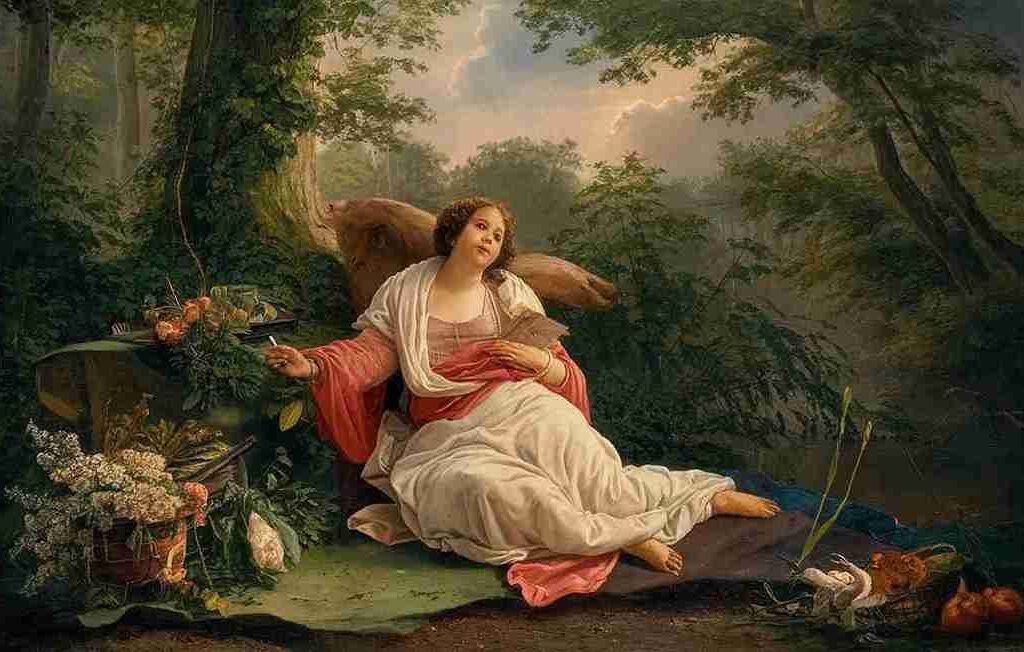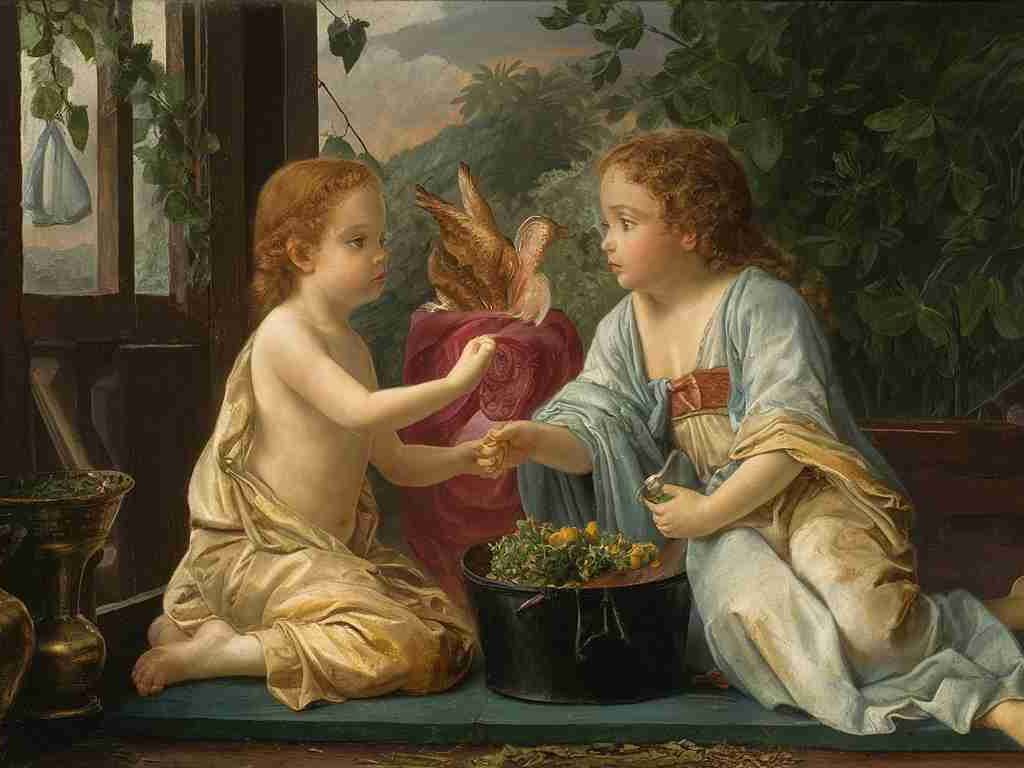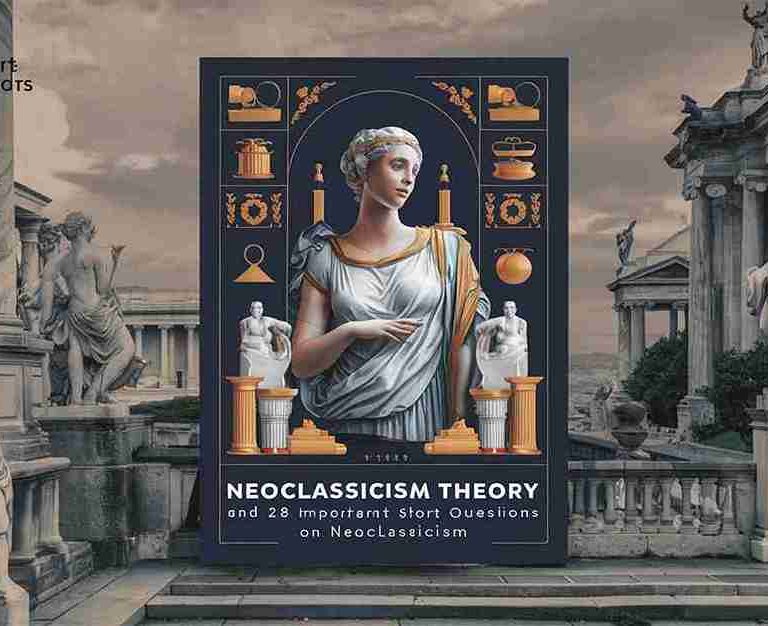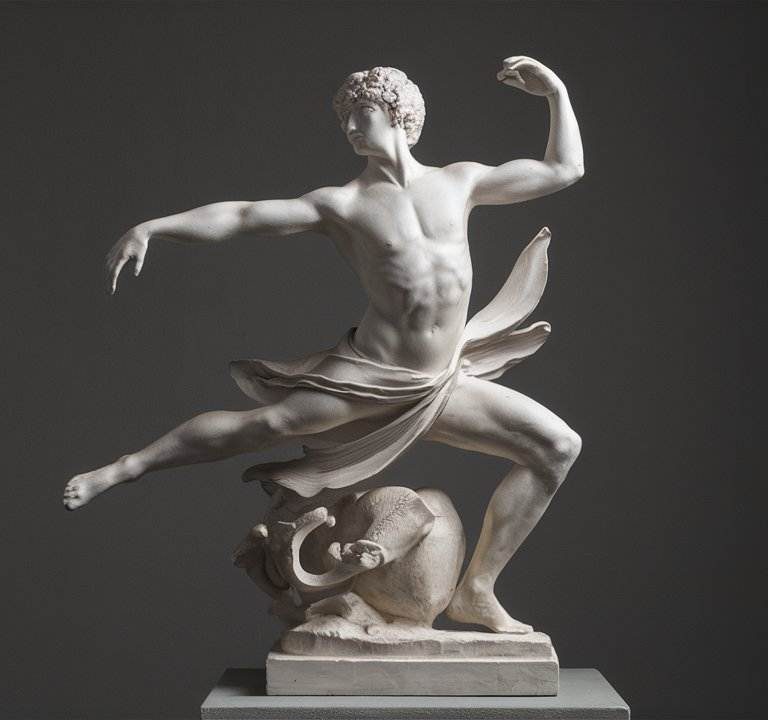
LOVING IN TRUTH
Summery of LOVING IN TRUTH from Astrophel and Stella
Sonnet No. 1

Loving in truth, and fain in verse my love to show,
That she, dear she, might take some pleasure of my pain,
Pleasure might cause her read, reading might make her know,
Knowledge might pity win, and pity grace obtain,
I sought fit words to paint the blackest face of woe: 5
Studying inventions fine, her wits to entertain,
Oft turning others’ leaves, to see if thence would flow
Some fresh and fruitful showers upon my sunburnt brain.
But words came halting forth, wanting Invention’s stay;
Invention, Nature’s child, fled stepdame Study’s blows; 10
And others’ feet still seemed but strangers in my way.
Thus, great with child to speak, and helpless in my throes,
Biting my truant pen, beating myself for spite:
“Fool,” said my Muse to me, “look in thy heart, and write!”
-Sir Philip Sidney
PARAPHRASE
I am loving truly and willing to show my love in verses, so that she, my dear ladylove might take some pleasure out of my painful labour of writing verses. Pleasure might cause her to read my verses, and reading my verses might make her know the depth of my passion of love. When she will have knowledge of my sad state of mind she will pity me. When pity will soften her mind, she will favour me. Studying poems of brilliant fancy I sought for appropriate words to depict my heart aching in the intensity of passion of love with a view to giving her intellectual pleasure. I read others’ books (poems) often to see if fresh and fruitful showers of poetic inspiration will fall upon my dry, heat-oppressed mind.
But words, lacking the support of poetic inspiration, did not come freely. Poetic creation, the child of Nature, flies for fear of the tortures of the step-mother, Study, And the poems (feet) of others only seemed not to fit in with my poetic temperament. Thus possessed with the intense desire (child) to speak out my mind, but unable to do so I feel helpless and am in terrible pain comparable to labour pain. So I bite my pen in desperation and beat myself in anger. My Muse said to me, ‘Fool, look in thy heart and write about the feelings of your heart.’ LOVING IN TRUTH
[A] Life of Sir Philip Sidney (1554-1586)
Sir Philip Sidney, Spenser’s friend, was a true Elizabethan gentleman of many activities courtier, statesman, poet, soldier. Accepted as the pattern of nobility of his time, he is said to have refused a cup of water when he lay dying on the battlefield of Zutphen, saying that it should be given to a wounded soldier lying near to him.
Sir Philip Sidney was born in 1554 of one of the most distinguished families in England. He was educated at Shrewsbury school and at Oxford. After leaving Oxford he travelled widely-in Paris, Vienna and Italy. Then he returned to Elizabeth’s court through his uncle, the Earl of Leicester who was at that time the Queen’s favourite.
In 1576 he fell in love with Penelope, twelve-year-old daughter of the Earl of Essex. Though the Earl was anxious for the match, no marriage took place. But the attachment inspired Sidney to address a series of sonnets to the lady whom he called “Stella”, and Sidney, for the purpose of these literary effusions, named himself “Astrophel”.
In 1577 he was sent on a mission to Germany, and in 1583 he accompanied the English army which was sent to help the Dutch Protestants against Spain. In 1586 he died in a skirmish at Zutphen. LOVING IN TRUTH
Beowulf: Summary and analysis of poem
[B] Sidney’s Works
- (1) The Arcadia:
- As a writer Sidney is known by three principal works, all published posthumously. The Arcadia is a pastoral romance in which he gives free rein to his fantastic imagination. It was written about 1580 to while away a temporary exile from court and to please his sister, the countess of Pembroke. It was influenced by the Spanish romance, Montemayor’s Diana and is characterized by the same combi- nation of the pastoral and the heroic. The book is a pastoral, since the scene is laid in the ideal Arcadia, whose king Basilius has retired into the country, where he brings up as shepherdesses his two daughters Pamela and Philoclea. But it is chiefly a romance of chivalry and love. Passion comes to encroach on the ideal land with the appearance of two shipwrecked princes, Musidorus and Pyrocles who after terrible combats, are united to the two daughters of Basilius. LOVING IN TRUTH
- This is the main theme, but in it are interwoven with numerous episodes which break the thread of the narrative. Into the framework of his romance Sidney pours his own thoughts on morality and politics and on life as he has seen it. Humour and tragedy lie cheek by jowl. He paints his villains as black as his heroes are immaculate, and his heroines are paragons of virtue. But it is his style which chiefly distinguishes his Arcadia. This style is what is called the ‘pathetic fallacy’ in rhetorical parlance. Sidney endows abstract and inanimate things with life, will and feeling:
- (i) “The ladies…. drank ” drank a little of their cool wine, which seemed to laugh for joy to come to such lips;”
- (ii) “blood-stained armour blushes because it had defended its master no better.” When ladies come from bathing the water ‘by some drops seemed to weep.’ Sidney like Spenser is a painter in words. He shows a sense of line and colour, of the effects of light and shade unknown to England till then.The Arcadia became immensely popular and was imitated by a hundred poets. LOVING IN TRUTH
- (2) The Apologie for Poetrie:
- The Apologie for Poetrie (1595), generally called the Defence of Poesie was written in answer to a pamphlet by Stephen Gosson called The School of Abuse (1579). In The School of Abuse the poetry of the Elizabethan age and its unbridled pleasure were denounced with Puritan nonsense. The Apologie for Poetrie is one of the first critical essays in English. Despite its laboured and unnatural style it is still one of the best expressions of the place and meaning of poetry in any language.
- (3) Astrophel and Stella:
- Astrophel and Stella published in 1591 is a collection of songs and sonnets addressed to Lady Penelope Devereux, afterward Lady Rich. Sidney and Lady Penelope had been betrothed when the latter was a child. For some reason the match was broken off, and Lady Penelope married Lord Rich with whom she lived for a while most unhappily. We cannot definitely say whether Sidney actually loved her when it was too late, or whether he wrote love-sonnets as a literary exercise. But it is charged with the bitter sorrow for lost happiness, the unconquerable longing to possess his love and the despair into which he was flung at first through her coldness, the dawning of hope when she confessed her own love, although withdrawing from his pursuit, and above all, the conflict between honour and passion. The sonnets set forth the each movement of his heart and each incident of his love. She is Stella, his star and he Astrophel, the lover of the star. LOVING IN TRUTH
[C] Sidney as a Sonneteer
After Wyatt and Surrey the sonnet was neglected in England till Sir Philip Sidney came forward with his Astrophel and Stella, the sequence of 108 sonnets based on Petrarch and inspired by the poet’s lost love for Penelope Devereux, daughter of the Earl of Essex, to whom he might have been betrothed in her childhood, but who was afterwards married to Lord Rich. The theme of the sonnets is the bitter regret for lost love, the irresistible desire to possess his beloved, despair at her first coldness, the sweetness of feeling himself loved by her, even when she fled him, and the conflict in his mind between duty and passion. The feelings expressed in them have some analogy with Petrarch’s. As Legouis says finely, “Within the narrow bounds of its fourteen lines he enshrined each movement of his heart, each incident of his love. She is Stella, his star; he Astrophel, enamoured of the star.”

As poetry these sonnets mark an epoch. hey are the first direct expression in English literature of an intimate and personal experience, struck off in the white heat of passion. Legcuis opines that through the sonnets the figure of a high-born young man appears more and more revealed. The quality of his soul gives them a particular ring. This love is rot the peculiarly spiritual exaltation of the mystical and religious Petrarch, nor the sensual ardour of a half-pagan artist like Ronsard, nor the frank and troubled love such as Spenser felt for his betrothed. “His is a knightly passion, breathing an atmosphere of chivalry in a region whence the lists of tourneys are not hard to reach.” We have also glimpses of the courtier and diplomat whom love snatches from his habitual thoughts. He is silent and melancholy at festivities and in the noble company he keeps, he is accused of pride because he seeks solitude, because he finds sympathy only in the moon’s wan countenance, which seems to him to be the face of a lover rejected like him.The sonnets of Sidney possess the supreme merit of the lyrical poetry, the merit of sincerity. This note of sincerity is struck with certainty in the first sonnet of Astrophel and Stella. Among Elizabethan sonnets Sidney’s, as a whole, rank next to Shakespeare’s. They are not so mellifluous as Spenser’s, but there is more fundamental brain-work and more realism in them. They are couched in racy English idiom, with here and there a felicity of phrase, a condensed metaphor, that is quite Shakespearean. LOVING IN TRUTH
[D] The Summary of the Sonnet
The poet wishes to express his true love for his beloved in verse, so that she might take some pleasure in his poetic pain. She might read his verse because of her pleasure, know the depth of his love for her, feel pity for him, and will then favour him with her love. He hunted for appropriate words to express deep distress caused by his lost love. He read others’ poems to have poetic inspiration that fails him, in order that he might entertain his love with intellectual pleasure. But study does not bring him poetic inspiration, rather it dries it out. Moreover, the others’ poems seem strange to him. Thus unable to express his intense passion of love, he feels helpless and is in agony. But then the poetic inspiration dawns on him and he realizes that he should seek for poetic inspiration deep down in his heart, because it is only the powerful feelings of love that can inspire true poetry of love.
[E] A Critical Appreciation of the Sonnet
The sonnet beginning Loving in Truth is the first of the series of 108 sonnets Astrophel and Stella expressing the poet’s (Sidney’s) love for Penelope Devereux, daughter of the Earl of Essex. The word ‘astrophel’ which Sidney uses to denote himself is the name of a bitter star-like plant, while ‘stella’ is the Latin name for star and is. used for Penelope. His love was unrequited-it was love from a distance. Loving in Truth expresses the poet’s yearning to please his ladylove by writing verses on his deep love for her. But adequate poetic inspiration fails him so that he cannot find appropriate words to paint the blackest face of woe. His study of the poems of others does not bring him the poetic inspiration to write sonnets to entertain her. Then the poet has a sort of revelation of the poetic truth. It dawns on him that poetic inspiration comes from within, and not without, that true poetry is born of powerful feelings of the heart. Thus the poet underlines the importance of emotion as the true source of poetry. LOVING IN TRUTH
Loving in Truth turns on love like a Petrarchan sonnet. The whole effort of the poet is to please his ladylove by his verses, so that she might favour him with her love. But love here is not the peculiarly spiritual exaltation of Petrarch’s, nor is it mystical or religious as in Dante, nor is it the sensual ardour as in the French Petrarchan Ronsard. It is love unrequited-it is love from a distance. It is love that pulsates with the eagerness to show the depth of his love for his beloved; it is love that is heavy with regret for lost love. Though Sidney’s love is unrequited, it is free from the angry renunciation of Wyatt; nor does it have anything to do with the fierce denunciation or abusive language such as we find in Wyatt’s sonnet A Renouncing of Love:
“…go trouble younger hartes
And in me claime no more authority
With idle youth go use thy property:
And thereon spend thy many brittle darts.”
Sidney’s is devoted and ideal love that does not care for reciprocation. Loving in Truth is, however, characterized by sighs, supplications and woes which are all Petrarchan. LOVING IN TRUTH
The poem is remarkable for its images which are apt, vivid and picturesque. In ‘the blackest face of woe’ woe is imaged as a woman with the blackest of faces. To compare woe to a black woman is both suggestive and vivid. ‘Sunburnt brain’ is a beautiful image which calls up the picture of the poet’s mind withering in the heat of disappointed love, just as flowers and fruits wither in the heat of the summer sun. ‘Fresh and fruitful showers’ is an apt image of fresh poetic inspiration that can vitalize the poet’s creative faculty. ‘Invention’ has been imaged as Nature’s child. Poetic inspiration or invention comes spontaneously, and not by effort like the spontaneous growth of Nature’s objects. It is inborn, and not the product of imitation or study of others’ poems. The image of Study as the step-mother of poetic inspiration or imagination is an apposite one. Just as a step-son flies his step-mother, so also poetic inspiration flees study. In ‘great with child to speak’ there is the image of a pregnant woman. The poet’s mind is pregnant with ideas and thoughts which struggle in vain for expression owing to the lack of poetic expression. As a result, the poet’s mind is in the throes of finding expression. In ‘truant pen’ we have the image of a truant school boy. True poetic invention keeps aloof from study, imitation or effort, as a truant stays away from school. ‘Biting my truant pen’ suggests the beautiful image of a poet who composes verses by effort or study in the absence of poetic inspiration. LOVING IN TRUTH

Loving in Truth is a lyric par excellence. It embodies his personal feelings, his deep and devoted love for Penelope Devereux to whom he was betrothed, but who was married to Lord Rich to his woe, his eagerness to delight her by his verses, and thereby win her pity, and above all, his chivalrous attitude to his ladylove. The poem is also characterized by sincerity and spontaneity which are the hallmarks of lyric poetry. Sidney is sincere about what he says, and what he says has the feature of ‘unpremedi- tated art’.
Loving in Truth is formally an example of the Shakespearean (English) sonnet. It consists of three quatrains rhyming ABAB CDCD EFEF and concludes with a rhymed couplet GG. The final six lines of the sonnet, even though written in the Shakespearean form, can become its sestet introducing a subtle but dramatic shift, a change of tone or point of view and bringing to the poem a sort of ‘revision’ or revelation, that the true poetic inspiration comes from within the poet’s heart, and not from study or imitation of the thoughts and style of others: “….. Look in thy heart, and write.” But the conspicuous feature of the sonnet’s structure is that it is written in hexameters
(except line 4) instead of in pentameter verse which is the usual measure of the sonnet. LOVING IN TRUTH
[F] Notes & Annotations
Lines 1-8
- Loving in truth: Loving sincerely and truly. The poet’s love for his lost love is true, genuine and proceeds from his heart of hearts. It is unlike the conventional love of many of the sonneteers of the time who merely parade their love. fain in verse my love to show: The poet desires to show his love for the lady, Penelope Devereux, his early love, now married to Lord Rich, in verse written in his praise. LOVING IN TRUTH
- she: Penelope Devereux. dear she the expression shows that the poet loved her deeply. The poet (Sidney) and Lady Penelope had been betrothed when the latter was a child. For some reason the match was broken off, and Lady Penelope married Lord Rich. After her marriage Sidney was seized with irresistible desire to possess her. As there was no way for him to have her love, he was flung into the sea of despair. might take some pleasure of my pain: Stella will feel pleasure when she realizes that the poet has taken much pain (i.e. has laboured hard) to write verses in her praise.
- Pleasure might cause her read: If she gets pleasure out of her realization of the poet’s poetic pain, she will be seized with curiosity to read what he has written in verses. reading might make her know: If she reads his verses she might know the depth of his love for her, and the distress he is in for not winning her love.
- Knowledge might pity win: Her knowledge of the depth of his love for her and the distress that gnaws his soul might make her feel pity for him. pity grace obtain: If the lady is moved to pity by reading his verses (i.e. his sonnets) which tell the tale of his woes, she might be kind to favour his love. The poet hopes to win her kindness by means of his verse. The poet’s is a knightly ideal of love divorced from sex and designed to win the ladylove’s favour.
- I sought: The poet searched for. fit words: appropriate words. to paint the blackest face of woe: To depict the saddest mental state of the poet caused by his lost love-his failure to marry the betrothed in time ‘Woe’ is personified as a woman having the blackest of face. LOVING IN TRUTH
- Studying inventions fine: Studying and imitating brilliant imaginative flights expressed in the verses of others. her wits to entertain: in order to delight Stella. Sidney’s whole endeavour is to please Stella, and with this end in view he uses in his verses brilliant poetical expressions and fanciful flights resorted to by other poets.
- Oft turning others’ leaves: Often turning over the pages of other writers’ books. leaves books. to see if thence would flow to find if the poetic Inspiration will rain on him from these books.LOVING IN TRUTH
- Some fresh and fruitful showers upon my sunburnt brain: As showers freshen and moisten the earth dried up and scorched by the burning heat of summer sun, and make the trees bear fruits, so the poet’s heat- oppressed, excited mind may be freshened and enlivened by the study of the poetry of other writers. N.B. The image in ‘my sunburnt brain’ is felicitous and meaningful. The sunburnt brain (= the dried-up, withered brain of the poet) is compared to the earth senrched by the burning rays of the summer sun. N.B. Here is a gibe at the majority of the Elizabethan sonnet-sequences which are merely literary exercises, and mere Imitations of Petrarch or the Petrarchans like Ronsard and Du Bellay. Most Elizabethan sonneteers parade their passion of love for the ladyloves in imitation of Petrarch. They are not inspired by any genuine feelings or emotions. Even the woman they are in love with and pine for are not of flesh and blood-they are created out of their imagination in emulation of Petrarch’s Laura. But Sidney is inspired by the deep passion of love for Lady Penelope who is a real woman, and not an idealized fiction. LOVING IN TRUTH

Line 9-14
9. words came halting forth: While writing in emulation of the Petrarchans, the poet’s expression lacks spontaneity. That is, he cannot write freely and spontaneously under the influence of other writers. The free flow of his writing is retarded when he attempts to write sonnets in the praise of his ladylove after the model of Petrarch’s Laura. wanting Invention’s stay: not having the support (stay = support) of imagination. Invention: imagination/poetic impulse. LOVING IN TRUTH
10. Invention, Nature’s child: Poetic impulse or imagination is inborn. It cannot be acquired and imitated from others. It is spontaneous. fled stepdame Study’s blows: Poetic impulse (i.e. poetic creation) flies at the touch of the effort to imitate others; in other words, poetic inspiration is stunted by study which has been compared here to a step-mother. As a step-mother does everything to finish the life of her step-son, so the study or effort to emulate other writers spoils the poetic creation. The comparison of study to a step-mother is a far- fetched one; so it is an instance of the conceit, step-dame: step-mother. blows: tortures/ curbing influence.
11. others’ feet: the feet (= the poems) of other poets. seemed but strangers in my way: seemed not to suit my poetic temperament. N.B. To emulate other poets is not the way of the type of the poet that Sidney is. LOVING IN TRUTH
12. Thus, great with child to speak: The poet is possessed of the passion of love for Lady Penelope, which strives for expression in adequate words. The poet’s passion is compared to a child in the mother’s womb. The comparison is a far-fetched one, and therefore a conceit. and helpless in my throes: Unable to express his helpless passion for his ladylove, Stella in adequate words, the poet feels helpless and is in pain owing to his inability to express his passion, so that the lady, on reading his verses may know how deeply he loves her. throes: pain of child-birth which is violent and unbearable. The pain of inability to give expression to his passion of love for Stella is compared to labour pain. LOVING IN TRUTH
13. Biting my truant pen: biting his pen in utter desperation. The poet is unable to give fitting expression to his passion of love. The feelings that are uppermost in his mind elude his pen. The poet here compares his pen to a truant. As a truant runs away from school, so the poet’s pen runs away from his emotion stirred in his mind by the thought of his lost love. Failing to give expression to his emotion he bites his pen in desperation. beating myself for spite: The poet is angry with himself at his failure to express what he wants to. This desperation on the part of the poet is a characteristic of a lover who has lost his love for his dilly-dallying. LOVING IN TRUTH
14. “Fool”, said my Muse: The poet was called a fool by the goddess of poetry (Muse), because he seeks poetic inspiration in the poetry of others. Muse: There were nine Muses. They were goddesses, and daughters of Zeus and Mnemosyne. They were inspirers of poetry, music, etc. They were Calliope, Clio, Erato, Euterpe, Melpomene, Polyhynnia, Terpsichore, Thalia and Urania, look in thy heart, and write: The Muse tells the poet to look for poetic inspiration in his own heart, for poetry originates in the aeart. It is indeed the spontaneous overflow of the feelings uppermost in the mind. LOVING IN TRUTH
About the Author
Sisir Mondal
Administrator
My name is SISIR MONDAL, I complete my graduate from University of Kalyani , West Bengal, India . I am like to build WordPress website and also developing this type of website . If you want your website , you can contact me trough email. thanks to visit this site.















You absolutely know how to keep your readers interest with your witty thoughts on that topic. I was looking for additional resources, and I am glad I came across your site. Feel free to check my website QH8 about Thai-Massage.